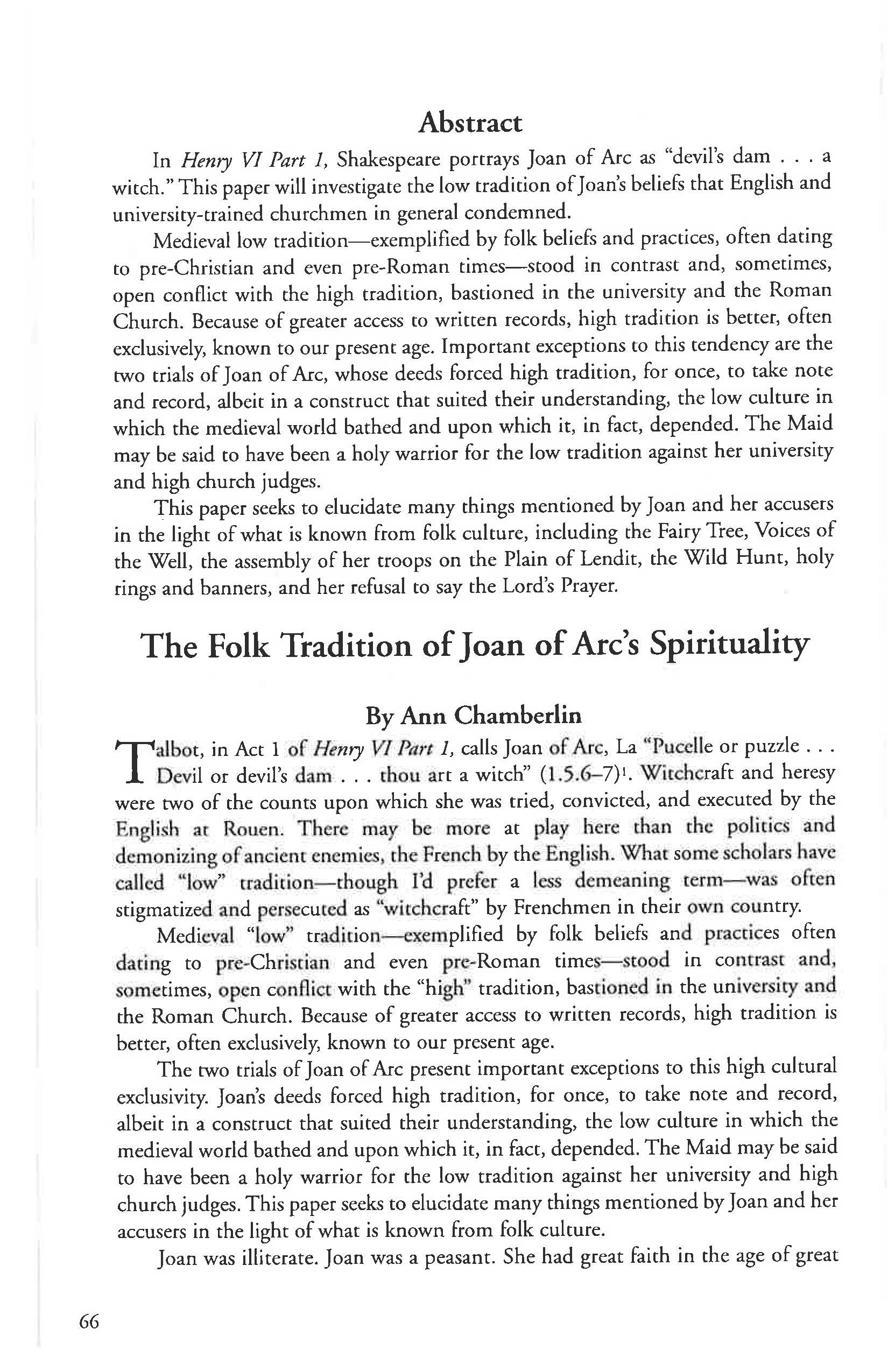The Folk Tradition of Joan of Arc's Spirituality
Main Article Content
Abstract
In Henry VI Part 1, Shakespeare portrays Joan of Arc as "devil's dam ... a witch." This paper will investigate the low tradition of Joan's beliefs that English and university-trained churchmen in general condemned.
Medieval low tradition--exemplified by folk beliefs and practices, often dating to pre-Christian and even pre-Roman times--stood in contrast and, sometimes, open conflict with the high tradition, bastioned in the university and the Roman Church. Because of greater access to written records, high tradition is better, often exclusively, known to our present age. Important exceptions to this tendency are the two trials of Joan of Arc, whose deeds forced high tradition, for once, to take note and record, albeit in a construct that suited their understanding, the low culture in which the medieval world bathed and upon which it, in fact, depended. The Maid may be said to have been a holy warrior for the low tradition against her university and high church judges. This paper seeks to elucidate many things mentioned by Joan and her accusers in the light of what is known from folk culture, including the Fairy Tree, Voices of the Well, the assembly of her troops on the Plain of Lendit, the Wild Hunt, holy rings and banners, and her refusal to say the Lord's Prayer.
